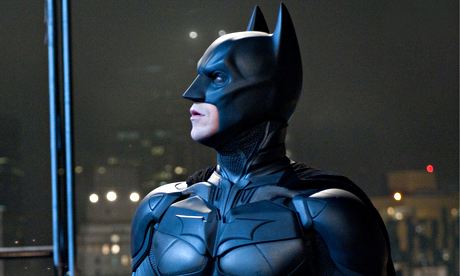
A friend of Dorothy he may or may not be, but it's hard to think of Batman as her contemporary. Like Judy Garland's incarnation of the Wizard of Oz heroine, however, the Caped Crusader celebrates a diamond anniversary this year, having first appeared 75 years ago in Detective Comics #27 .
With yet another film in the works, the obstinately rubber-clad septuagenarian remains a ubiquitous cultural icon, in large part due to a perennially elusive psychology that shifts with each interpretation.
1939 Batman is introduced as a terrifying vigilante figure, prone to remorseless killing – his chilly mentality explained later with the backstory of his parents' murder.
1940 Justice is all well and good, but can we lighten him up a little? DC Comics editor Whitney Ellsworth orders that the character can no longer be seen to kill, initiating a move toward warmer respectability that continued through the brighter, more fantasy-driven comics of the postwar period.
1954 Not respectable enough for some, as psychologist Fredric Wertham suggests the comics "stimulate children to homosexual fantasies" through Batman's relationship with young ward Robin. Love interest Batwoman is introduced shortly afterwards, but doesn't last: girls come and go, as does Robin, but Batman's heart truly belongs to his butler, Alfred.
1966 Batman's first film and accompanying TV series strip the hero of any remaining menace, embracing a high-camp tone and upping the chemistry with Robin. It's a gesture toward swinging 60s liberalism that comic writers spend a couple of decades trying to correct.
1989 Tim Burton's gothic-styled Batman reintroduces the darkness, while Michael Keaton refashions Bruce Wayne as a surly, sulky and highly reticent man of mystery – he's never seemed more adolescent.
1995 Joel Schumacher prefers his Batman less psychologised and more eroticised – cue a redesign of the Batsuit as fetishwear (complete with nipples), the come-out-of-the-closet taunting of the Riddler and, of course, the return of a particularly twinky Robin.
2005 No sex please, we're Batman: Christopher Nolan's Dark Knight trilogy returns the figure to his origins as a ruthless peacekeeper. Suffused with post-9/11 fury.
2014 The Lego Movie takes Nolan's self-important Knight down a notch, pointing out the empty misogyny behind his intense facade as he plays second fiddle to a chipper construction worker.

